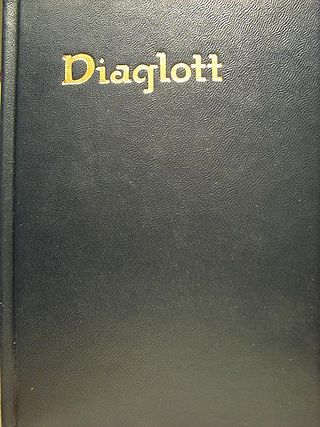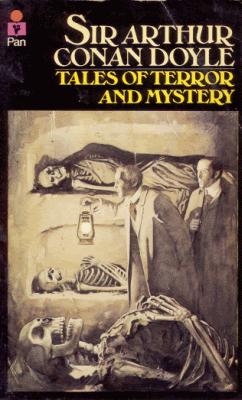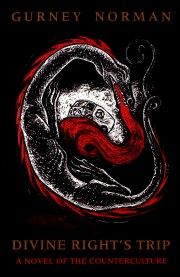
Josiah Henson was an author, abolitionist, and minister. Born into slavery, in Port Tobacco, Charles County, Maryland, he escaped to Upper Canada in 1830, and founded a settlement and laborer's school for other fugitive slaves at Dawn, near Dresden, in Kent County, Upper Canada, of Ontario. Henson's autobiography, The Life of Josiah Henson, Formerly a Slave, Now an Inhabitant of Canada, as Narrated by Himself (1849), is believed to have inspired the title character of Harriet Beecher Stowe's 1852 novel Uncle Tom's Cabin (1852). Following the success of Stowe's novel, Henson issued an expanded version of his memoir in 1858, Truth Stranger Than Fiction. Father Henson's Story of His Own Life. Interest in his life continued, and nearly two decades later, his life story was updated and published as Uncle Tom's Story of His Life: An Autobiography of the Rev. Josiah Henson (1876).
Antonius Diogenes was the author of an ancient Greek romance entitled The Wonders Beyond Thule. Scholars have placed him in the 2nd century AD, but his age was unknown even to Photios, who wrote a synopsis of the romance. The romance was a novel of twenty-four books and was written in the form of a dialogue about travels. It is highly praised by Photios for its vivid narration, its clarity, and the gracefulness of its descriptions.

The Mummy's Tomb is a 1942 American horror film directed by Harold Young and starring Lon Chaney Jr. as Kharis the mummy. Taking place 30 years after the events of The Mummy's Hand, where Andoheb has survived and plans revenge on Stephen Banning and his entire family in Mapleton, Massachusetts. With the help of the high priest Mehemet Bey, Andoheb and the mummy Kharis Bey takes up a job as a caretaker of a graveyard. At the first full moon, the mummy is fed tanna leaves which allow him to break into the Banning residence and kill the now elderly Stephen. Banning's son then seeks assistance from Babe Hanson, one of the members of the original Banning expedition to Egypt to stop Andoheb and Kharis.

Black Swan Green is a semi-autobiographical novel written by David Mitchell, published in April 2006 in the U.S. and May 2006 in the UK. The bildungsroman's thirteen chapters each represent one month—from January 1982 through January 1983—in the life of 13-year-old Worcestershire boy Jason Taylor. The novel is written from the perspective of Taylor and employs many teen colloquialisms and popular-culture references from early-1980s England.

The Kindly Ones is a novel by Anthony Powell that forms the sixth in his twelve-volume sequence, A Dance to the Music of Time. The book's title relates to the placatory name given to the Furies of Greek mythology and chiefly addresses the period just before and after Britain enters World War II. The book is dedicated "For R.W.K.C.", the biographer and historian R. W. Ketton-Cremer.

Fear and Loathing in Las Vegas: A Savage Journey to the Heart of the American Dream is a 1971 novel in the gonzo journalism style by Hunter S. Thompson. The book is a roman à clef, rooted in autobiographical incidents. The story follows its protagonist, Raoul Duke, and his attorney, Doctor Gonzo, as they descend on Las Vegas to chase the American Dream through a drug-induced haze, all the while ruminating on the failure of the 1960s countercultural movement. The work is Thompson's most famous book and is noted for its lurid descriptions of illicit drug use and its early retrospective on the culture of the 1960s. Thompson's highly subjective blend of fact and fiction, which it popularized, became known as gonzo journalism. Illustrated by Ralph Steadman, the novel first appeared as a two-part series in Rolling Stone magazine in 1971 before being published in book form in 1972. It was later adapted into a film of the same title in 1998 by director Terry Gilliam, starring Johnny Depp and Benicio del Toro, who portrayed Raoul Duke and Dr. Gonzo, respectively.

A House Like a Lotus (ISBN 0-374-33385-8) is a 1984 young adult novel by Madeleine L'Engle. Its protagonist is sixteen-year-old Polly O'Keefe, whose friend and mentor, Maximiliana Horne, has sent her on a trip to Greece and Cyprus. As she travels, Polly must come to terms with a recent traumatic event involving Max. The history of Polly's relationship with Max is told in flashback over the course of the novel. The use of double quotes distinguishes the present, whereas single quotes indicate flashbacks from the past.

Gurney Norman is an American writer documentarian, and professor.
Madeleine L'Engle, an American novelist, diarist and poet, produced over twenty novels, beginning with The Small Rain (1945), and continuing into the 1990s with A Live Coal in the Sea (1996). Many of her fictional characters appeared in more than one novel, sometimes in more than one series of novels. Other major characters are the protagonists of a single title. This article provides information about L'Engle's most notable characters.

The Emphatic Diaglott is a diaglot, or two-language polyglot translation, of the New Testament by Benjamin Wilson, first published in 1864. It is an interlinear translation with the original Greek text and a word-for-word English translation in the left column, and a full English translation in the right column. It is based on the interlinear translation, the renderings of eminent critics, and various readings of the Codex Vaticanus. It includes illustrative and explanatory footnotes, references, and an alphabetical appendix.

Let's Kill Uncle—also known as Let's Kill Uncle Before Uncle Kills Us—is a 1966 color black comedy film produced and directed by William Castle, about a young boy trapped on an island by his uncle, who is planning to kill him. The boy's only friend is a young girl, who tries to help him.
The Divine Ryans is a 1999 Canadian film directed by Stephen Reynolds, written by Wayne Johnston as an adaptation of his novel, and starring Robert Joy and Pete Postlethwaite. The film tells the story of the Ryan family, who run a funeral parlour in St. John's, Newfoundland and Labrador.

"The Small Assassin" is a short story by American author Ray Bradbury. It was first published in the November, 1946 issue of Dime Mystery. It was collected in Bradbury's anthology Dark Carnival and later collected in the anthologies The October Country, The Autumn People, The Small Assassin, The Stories of Ray Bradbury, and The Vintage Bradbury.

"The Brown Hand," a well-noted short story by Sir Arthur Conan Doyle, was first published in The Strand Magazine, May 1899.
"The Law of Vacant Places" is the third season premiere episode of the FX anthology series Fargo, and the twenty-first episode of the series overall. It was written and directed by series creator and showrunner Noah Hawley. The title refers to a method in bridge known as the principle or law of vacant places.

V. M. Varga is a fictional character in the FX television series Fargo. He is the main antagonist of the third season and is portrayed by David Thewlis.

Doctor Sleep is a 2019 American supernatural horror film written, directed, and edited by Mike Flanagan. It is an adaptation of the 2013 novel of the same name by Stephen King and sequel to Stanley Kubrick's 1980 film The Shining. The film stars Ewan McGregor as Dan Torrance, a man with psychic abilities and a drinking problem, who struggles with childhood trauma caused by the horrors at the Overlook Hotel. Rebecca Ferguson, Kyliegh Curran, and Cliff Curtis have supporting roles as new characters: Abra Stone and Billy Freeman team up with Dan to take down Rose the Hat and her gang of followers.
Raymond "Ray" Stussy is a fictional character in the FX television series Fargo. He is one of several protagonists of the third season and, like his brother Emmit, is played by Ewan McGregor.
Emmit Stussy is a fictional character in the FX television series Fargo. He is one of several protagonists of the third season and is portrayed by Ewan McGregor.
"The Lord of No Mercy" is the sixth episode of the third season of the American anthology black comedy–crime drama television series Fargo. It is the 26th overall episode of the series and was written by series creator Noah Hawley and directed by Dearbhla Walsh. It originally aired on FX on May 24, 2017.












